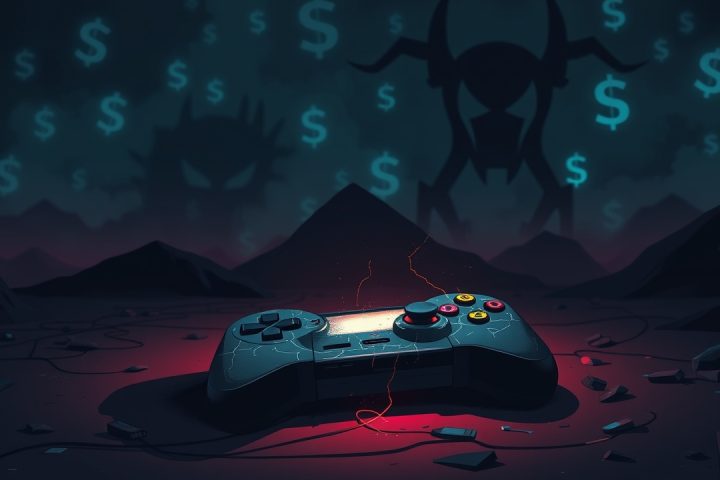Understanding Rug Pulls in Cryptocurrency
Cryptocurrency operates within a landscape that often resembles the lawless Wild West, presenting a myriad of opportunities but also numerous pitfalls for unwary investors. One particularly insidious threat lurking in this space is known as the “rug pull.” This deceptive tactic involves the creators of a project vanishing without a trace, often taking investors’ money with them, while leaving behind worthless assets. Such scams are especially prevalent in the realms of decentralized finance (DeFi) and the broader crypto market, where a lack of regulation enables these schemes to thrive.
Recognizing the Warning Signs
Recognizing the warning signs of a potential rug pull is essential for safeguarding your investments and exploring the thrilling world of cryptocurrency safely. This guide will familiarize you with the concept and highlight key red flags to watch out for.
What is a Rug Pull?
In simple terms, a rug pull occurs when a project’s team promotes a cryptocurrency, non-fungible token (NFT) collection, or DeFi application to attract investments, only to later drain the funds and disappear. Imagine placing your trust in a new venture, only to find that the developers have vanished, leaving you with nothing but digital tokens that have plummeted in value.
Common Settings for Rug Pulls
Rug pulls tend to occur in three primary settings:
- DeFi Liquidity Pools: Many DeFi projects depend on liquidity pools to facilitate token trading. If the developers control these funds, they can easily pull the money, resulting in a sudden loss for investors.
- NFT Ventures: Throughout the NFT craze, many projects lured participants with ambitious promises and then vanished after profiting from the hype, exemplifying another type of rug pull.
- Meme Tokens and Hype Coins: New cryptocurrency releases often gain rapid popularity thanks to catchy names or viral marketing. However, if the team controlling the tokens sells off their holdings during a price surge, early investors are left with depreciated assets.
The Impact of Rug Pulls
The consequences of these fraudulent activities extend beyond personal financial losses; they undermine overall trust in cryptocurrency, complicating the environment for legitimate projects and adding fuel to skepticism surrounding the industry.
How Rug Pulls Unfold
It typically begins with the launch of an enticing new project, complete with a polished website and vibrant social media presence. Developers might employ terms such as “huge potential returns” or “secured liquidity” to entice early backers. The community’s excitement often leads to a surge in token prices, but this momentum can be manipulated by backstage actions.
Once the price has risen and the creators perceive they’ve maximized their gains, they will drain the liquidity pool or divest their holdings, leading to a catastrophic drop in value. Investors frequently find themselves unable to sell their assets as the project’s web pages and communication channels go dark, leaving them at a total loss.
Notable Examples
Notable examples of high-profile rug pulls include the Squid Game Token (SQUID), Meerkat Finance, and the Frosties NFT project.
Identifying Potential Rug Pulls
Identifying a potential rug pull isn’t a matter of sheer luck. Familiarize yourself with common traits of scams to avoid becoming a victim:
- Project Team Identity: If it’s unclear who the developers are or they remain entirely anonymous without a credible history, proceed with caution.
- Unrealistic Promises: Be wary of claims like “guaranteed returns”; if it sounds too good to be true, it likely is.
- Liquidity Locking: Check if project liquidity is locked; otherwise, funds can be withdrawn at any time, exposing you to high risk.
- Smart Contract Integrity: Ensure that the smart contracts have been audited and are transparent. Unverified or mutable codes can indicate an intention to defraud.
- Community Engagement: Watch for excessive bot activity or generic replies in project forums; genuine teams are open to interaction and feedback.
- Responsiveness to Concerns: If developers begin deleting negative comments or blocking inquiries, that’s a significant warning sign.
Conclusion
Trust your instincts—if something seems off, it likely is. Even seasoned investors can fall prey to these schemes, but by continuously educating yourself, you can hone your intuition and enhance your decision-making.
Ultimately, navigating the complexities of crypto requires more than mere luck; it demands diligence, inquisitiveness, and rigorous vetting of potential investments. By adopting a systematic approach—verifying liquidity, analyzing smart contracts, and researching key players—you bolster your defenses against scams. Cryptocurrency can be a rewarding adventure with the right strategies and knowledge to excel confidently in your investment journey.




